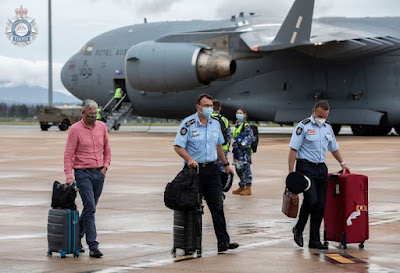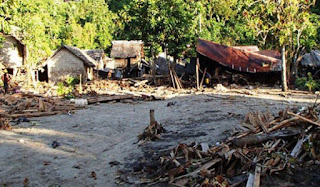EMBRACING TRECHNOLOGY FOR SMART CITY
BY GEORGINA KEKEA
JAKARTA is the capital and largest city of Indonesia.
Located on the northwest coast of the world’s most populous island Java,
it is said to be the center of economics, culture and politics of
Indonesia. As of 2014 the population in Jakarta is said to be 10
million. The city is currently the seat of the ASEAN Secretariat and
attracts migrants from all over the Indonesian archipelago. It is said
to be the ‘melting pot’ of many communities and cultures.
The commonality between Jakarta and Honiara is the high
population and different cultures and traditions from people from
different background and ethnicity. But the most visible difference
between the two cities is the state of the environment. For a busy city
with 10 million people, Jakarta is by far a clean city and one hardly
see plastic or rubbish on the streets. With millions of people scurrying
through and fro daily, it is amazing to see that no one litter the
streets nor can one see litter in the street corners.
Jakarta also has problems with rapid urban growth leading
to overpopulation, traffic congestion, poverty and inequality. Like all
other governments in Indonesia, Jakarta is a province in Indonesia that
relies on the central government for a big portion of their income
budget. For the provincial government, (in Solomon Islands it is Honiara
City Council) sources or revenue are incomes from taxes such as vehicle
registration among other fees. Their priority areas of spending are on
education, transport, flood control measures (Jakarta is prone to
flooding) environment programs and other social obligations such as
health and housing.
Whilst Solomon Islands government is struggling to get a
five to six percent economic growth rate, Jakarta’s economy alone is
growing between five to six percent. The largest contributions to Gross
Regional Domestic Product (GRDP) in Jakarta are finance, ownership and
business services, trade, hotel and restaurant sector and the
manufacturing industry sector.
But to manage and look after a big city like Jakarta has
not been an easy task for the provincial government. As one of the
highest urban capital cities in the world, there are a number of complex
challenges and the government is still working on building a cohesive
and active community that can contribute to the well being of Jakarta.
Thus in 2013 a concept was formed to find solutions to
problems in Jakarta by using integrated information and communication
technology in all public sectors. With the emergence of a new generation
in the global population, smart solutions are the only way to tackle
the social issues of the city.
To be Smart, it is an unique and tiresome process.
Implementation of right and effective solutions has to consider the gaps
and how to tap into these gaps. Long term strategic planning,
governance, ever growing population are areas to consider. Maturity and
specific challenges are key areas to consider and clear target goals
needs to be set. Thus after much planning, the Smart city concept came
into fruition in 2013.
The provincial government took to a mobile application
called Qlue. This tool acts as synergy between government and people
full filling the bottom up approach system. The government employs
officers in its information section whose jobs are mainly to track
people's complaints and queries and direct to the right authorities for
answers or actions.
 "Example, a citizen sees rubbish not coĺlected, all they do is take a
picture, give the address and post it on Qlue our officers will followup
through the department responsible and they will do their job", says an
officer from the provincial government's ministry.
"Example, a citizen sees rubbish not coĺlected, all they do is take a
picture, give the address and post it on Qlue our officers will followup
through the department responsible and they will do their job", says an
officer from the provincial government's ministry.
"Nowadays everyone is using their mobile phone and by using
this strategy it has helped the government a lot in stepping up and
also makes our city a better one".
By using the Smart city app (Qlue) it has improved
competitiveness and help develop public services to support people's
general welfare, improve quality of infrastructure, strengthen the
economy, social and cultural, improve environmental conditions and
efficient use of natural resources, improve government performance,
strengthen innovation and creativity and promotes
Good governance, leadership, and collaboration between government and its people.
Good governance, leadership, and collaboration between government and its people.
"We use technology for everything. More than 80 percent of
people in Jakarta has mobile phones so it is very effective", says the
staff from the information department of the provincial government.
Though already five years with this system, there is still room for improvement and a lot still needs to be done.
"Government listens, system connect and society participates".
 Jakarta is said to be the 13th largest city in the world. It is formally classified as a special metropolitan district.
Jakarta is said to be the 13th largest city in the world. It is formally classified as a special metropolitan district.At the administrative level, it is a province, and its mayor has the same status as the governor of a province. Jakarta is divided into five administrative municipalities.
The mayor is responsible for supervising
the administration of local government and for coordinating the local
offices of national government ministries.
Public utilities are usually operated or owned by the Indonesian government.
Ends///





Comments
Post a Comment